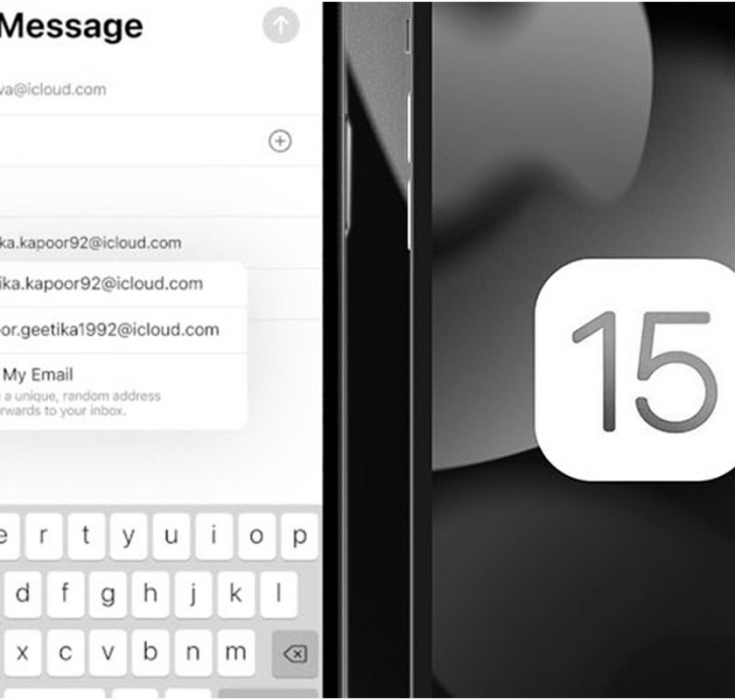What role does design play in marketing?
Behind every successful marketing campaign is considered design – so considered, in fact, you may not even notice it.
Design is marketing’s superpower. It is there to bring the brand to life and convey a campaign’s message, without overwhelming the audience.

Everywhere you look you’ll see something that has been strategically designed to capture your attention – from the billboard you drive past each morning, to the scroll-stopping Instagram posts you engage with – but have you ever thought about the theory behind the e design decisions? Good design drives the message home and evokes a response, whether it be feeling, an emotion, or hitting that glorious ‘ADD TO CART’ button.
In this blog we’ll discuss the role design plays in marketing and how it can impact the success of your next campaign.
Building trust with your brand
The purpose of most campaigns is two-fold – to build brand awareness and inspire your customer to do an action.
To motivate potential customers to engage in an impactful way, you need one thing – trust.
Every touchpoint your customer has with your brand must communicate a message, and you want your message consistent across all touchpoints. From billboards, digital advertising, social media content, sponsored content, EDM’s to instore – the design of your content needs to hit the mark every time and tell the true story of your brand.
In the early phases of a business, brand consistency can be challenging, but getting it right is critical to building a strong foundation.
The first step towards success is developing your brand strategy.. This will be your ‘brand bible’ and a robust reference point for brand application. From here, you can then begin building your brand identity with templates that are consistent and easy to roll out across all touchpoints.
Want to know more check out our blog on: Brand identity Vs brand strategy: what’s the difference?
Design testing
Understanding what content resonates with your target market is critical if you want to impact your bottom line. This can be achieved through A/B testing in your digital campaigns. A/B testing gives you the opportunity to test and analyse different messages and designs. When you find a winner, you can roll this out across other brand touchpoints.
To get started, the placement of your ‘call to action’ (CTA) button, and the colour of the button, can determine if your customer will act in the way you need them to. Nailing this design element can hugely impact your success, as the button is the gateway between your content and a sale.
Once you’ve nailed your CTA button, you can move on to testing different design layouts and different copy. Does an image of a person resonate with your customes more than an image of the product? Do certain image styles illicit a greater response?
To make the most of any digital campaigns , you can design, test, analyse data, improve design and test again! If you recognise a visual is resonating more with your audience, you can leverage that design to make a bigger impact.
Social media
Social media is one of the most powerful marketing tools and a social media strategy will set you apart from your competitors. Before you post, you’ll need to think about:
- Your brand’s tone of voice, how are you talking to your customers? What language do you use? What is your brand identity?
- Ensuring your aesthetic is consistent across all of the social media platforms you use (IG, FB, Tik Tok etc)
- Creative output – would this message be conveyed better via video, animation, carousel or a static image?
Building a consistent brand across your social media platforms can lead to increased brand loyalty and heightens the opportunity to market to your audience in an organic way.
Video, another marketing superpower
In 2022, audiences are spending an average 19 hours per week watching online videos… that’s almost 3 hours per day! Video can be used to educate a new audience, generate leads and convert customers.
The power of video is the ability it gives you to communicate a message in a short amount of time. Instead of going to your website and reading through pages of content to understand the benefits of your business, customers can now watch a 30sec video that tells them everything they need to know.
Benefits of including video in your marketing strategy:
- Educates and builds trust
- Communicates a message, fast
- Encourages social media shares, brand awareness
- Improves SEO ranking
- Anywhere, anytime.
The beauty of video is that it doesn’t have to be a high-quality production to get cut-through – what matters most is that the message is clear, you know your audience, you are adding value and that it aligns with your brand.
It has been scientifically proven that the human brain understands visual information better than written, therefore carefully chosen images, or a thought-provoking video can say more to your target audience than a few hundred words.
If you need help communicating your message through design, you’ve come to the right place! Reach out to our Creative Director, Bec Kowald, to book a complimentary brand consultation – [email protected]
Brand identity Vs brand strategy: what’s the difference?
We’ve all heard of the term ‘branding’, but what exactly does this mean?
For starters, branding is not your logo, colour palette, website or business name. Although these are important and necessary elements to building your brand and business, they aren’t exactly your brand.

In this blog, we’ll discuss the differences between a brand, brand identity and brand strategy and answer questions such as “how can branding benefit my business”.
Let’s start with the basics.
What is a brand?
A brand is the thread that runs through every inch of your business – have you heard of the saying “perception is reality”?
The perception someone has with your brand is influenced by the design, client experience and quality of your product – your brand is the all-encompassing experience people have with every touchpoint of your business.
Think of your brand as a person. What they wear, how they make you feel, their mannerisms and what they believe in are all representations of a person. Your brand is the same. It’s the experience a person has navigating your website, how you respond to customers or engage with stakeholders, the state of your office and bathroom – all of this creates an experience and leaves an impression.
Thinking of your business, ask yourself:
- How do potential clients feel when they interact with my business?
- What do people say about my business?
- What do people think about my business?
Your answers should be consistent across all touchpoints for the most cohesive brand experience. If it’s not, you’re likely attracting the wrong clients (or no clients!).
When it comes to your brand, high standards are key for establishing authority and trust – but how?
What is brand strategy?
If we imagine that brand identity is what your audience consumes, brand strategy is the vehicle within which the goods are delivered. It’s a long-term commitment between your brand and your audience. This shouldn’t be confused with a marketing strategy, which is a short-term commitment and is influenced depending on time of the year and trends, for example.
Without a strategy, your brand is just sitting there, looking nice and pretty.
Brand strategy establishes what you do, how you do it and why you do it. All of this helps a designer create a brand that resonates with the right audience. A great brand strategy should be able to answer key questions about your business before you even think about what colour to use in your logo – like why your business exists? What is your mission? Who are your competition? etc.
Working with a designer or agency on your strategy before your identity is essential to ensure the creative and strategy can work together, harmoniously.
Once you’ve established your brands strategic roadmap, it’s time to craft the identity.
What is brand identity?
A brand identity should be created intentionally and well informed by your brand strategy: cleverly aligning your brand strategy into visuals. This is the part where colours, fonts and shapes all play an important role, and each decision must be backed by your strategy.
Brands perception can be experiential or visual, but when it comes down to it, identity and strategy work hand-in-hand, so both need to be exceptional.
Good branding is often simple and clearly communicated; think of Target with its red circles, or Nike with its swoosh tick. In most cases, memorable, distinct brands abide by less is more.
How does branding benefit your business?
We have discussed the difference between a brand, brand identity and brand strategy, but how do these align to benefit your business? Five reasons include:
- Increased brand awareness. This helps your audience differentiate your product or service from its competitors.
- A coherent brand gives you credibility by looking professional and organised.
- Good branding builds loyal brand ambassadors who share similar values to your brand. This will develop an emotional connection between them and your brand.
- A great brand experience often leads to referrals and returning customers.
- A solid brand strategy and identity makes it easier for a brand to grow as it sets the tone for everything that you do. Your products and services should always align with your brand’s mission and goals.
Brands are likely the most powerful business tool ever invented. If you’re a business owner wanting to progress your business and create a point of difference, a solid brand identity and strategy is a fundamental place to start. If you’re interested in learning more about the benefits of branding, a creative agency like Sabio, is the perfect place to start.
Get in touch with our Creative Director, Bec Kowald, via [email protected] or on our contact page to see how our team of creatives can help.
Written by: Haylea Paul
Use these three Instagram video tools to achieve maximum engagement
Power to content creators as short-form video captivates the world!
As our media-dominated society continues to evolve, so do the platforms we use. Instagram, like all others, is no stranger to an update. Over the years, the app has evolved from a photo sharing tool to a platform that encompasses the most used features of all your go-to social media apps.

Short-form video currently takes the cake, dominating the social media game on platforms such as Instagram (reels) and Tik Tok. Packed with features to create hard-hitting content, short-form video gives content creators the tools needed to get on the trend… and do it right!
According to a survey from HubSpot that interviewed 500 marketing gurus, 85% of marketers say short-form is the most effective video style they leverage. Videos are a unique and effective tool for marketers, opening the door to the limitless potential to influence their audience in a way that sits beyond your average text or image.
Video content is paramount to ensuring engagement on your social profile. But you can’t just post any video.
So how exactly should you use video? Platforms like Instagram host different short-form video options and In-feed, Reels and Instagram Stories are our favourites.
In-feed Videos
In-feed Instagram videos allow for planning and are usually specifically curated as these videos are displayed directly on your grid. In-feed Instagram videos can be up to 60 seconds long and are perfect for interviews, product launches or behind-the-scenes footage.
Instagram Stories
Instagram stories are the playful sister. Perfect for on-a-whim content, Instagram stories are the shortest video format. Truly capturing a moment in time, stories disappear within 24 hours, however you can pin them on a story highlight if you want to make that moment last just a little bit longer. Stories are versatile and can be used to engage with your audience through a conversational informal tone. Whether you are filming yourself talking to your followers or capturing a pretty sunset, stories include a beautiful array of stickers and gifs to help elevate your content to the next level.
From an interaction perspective, Instagram stories include features that allow viewers to engage, quite literally, with your content. From polls and Q&As, to links and hashtags, your audience can tell you exactly what is on their mind. Users can even participate alongside you via Instagram’s new ‘add yours’ sticker, allowing them to join a chain of responses and share their own take on the creators prompt – often these explode worldwide.
Reels
The reel showstopper when it comes to Instagram video tools is Instagram Reels. Instagram’s most recent video tool, reels, allow users to create 30-second multi-clip videos with text, stickers, AR filters and audio. Reels can be used to share highlights from your feed or totally new content. Through Instagram reels, trends are born. Users can collaborate, discover, and challenge other creators – sending shareable moments right across the world.
Warning: Instagram reels are addicting. You will find yourself mindlessly scrolling.
Now that you know what kind of videos you could make, here are our top tips for optimising engagement, no matter the video tool you choose!
- Keep your short-form videos…Short. The same HubSpot research discovered that the Instagram videos that got the most comments averaged just 26 seconds.
- Add an enticing thumbnail. It doesn’t have to be complicated – just choose a slide that matches your brand’s aesthetic. Then just add some text to create a title so the viewer knows what the video is about. This brief title will increase curiosity and persuade people to click to watch
- Simplify the language. If your video includes speech, use simplified language as to not overpower the audience with too much information. Generally speaking, people tend to have a short attention span, so keep all information direct and to the point.
- Play around with the array of video editing tools out there! Instagram itself offers great simplified editing tools on their platform already. You can easily trim videos and add filters or text and not require a third-party application or software.
- Hit them from the first second. Make those first few moments of the video count with a compelling hook right off the bat that encourages people to watch instead of scroll – cut out fillers and waffle and get straight to the good stuff.
- Incorporate engagement features like stickers and polls when creating Stories to really drive up your audience interaction.
Instagram Videos can create multiple opportunities for your online brand. Here are some of our favourites:
- Assists in diversifying your marketing strategy
- Gives you the opportunity for real-time marketing
- Increases sale opportunities
- Great reach and engagement levels
- Can add personality to your brand and is great for brand story telling
So, get creative and play around with the variety of video features that Instagram has to offer. You never know when you might go viral!
Looking to create engaging video content? Get in touch with our Creative Director, Bec Kowald, via [email protected] to see how our team of creatives can help.
Our best practice email marketing trends for 2022
In the ever-changing digital landscape, email marketing remains one of the oldest, yet most effective digital channels of today, with no signs of slowing down in 2022.
Email marketing is often described as “the glue that sticks digital marketing channels together” and is a key platform that can be used to directly communicate with and inform your audiences. With 4 billion email users daily, email marketing continues to stand as one of the most powerful communication tools used to connect and engage online audiences (HubSpot, 2022).

This year presents new opportunities, growth, and innovation for email marketing – so if you aren’t currently harnessing the power of your email marketing strategy, you are ignoring a key channel that otherwise could be utilised to connect with your audience and drive ROI.
To help your brand stand out in a cluttered inbox, stay ahead of competitors and drive conversions this year, we’ve put together our best practice email trends for 2022.
Clean your mailing list regularly
Many people assume that the more subscribers in your database, the better. However, while having a larger audience may be tempting, it can be detrimental to your email campaign – effecting your open rate, click-through rate and ultimately limiting your campaign from driving valuable results.
Removing unengaged contacts is vital to keeping your email database clean, improving your overall deliverability, trusted sender status and ensuring that you are getting an accurate open and click-through rate. Not only will this allow you to remove inactive subscribers but it will also save you money and cut down unnecessary costs – the more subscribers you have, the more expensive it is to run your account.
If you are seeing a high number of bounces, spam complaints, or declining open or click-through rates, that is an indicator it’s time to start cleaning your email lists in 2022. Think quality over quantity!
Utilise sleek email designs
Research shows the average humans attention span is now officially shorter than a goldfish, which means to drive conversions, the design of your email campaign is king. Emails must be visually friendly with eye-catching aesthetics, meaningful copy and a consistent, on-brand look and feel that will be easy for readers to navigate.
The forecasted trends for 2022 highlight a key shift towards efficient, simple, clean graphics – getting rid of unwanted and unnecessary content that may deter viewers. The main rule of thumb? Stick to fewer than three type-faces to avoid clutter and create a seamless visual experience for your audiences and keep your email around 500 to 650 pixels wide for functionality. Remember, it’s all about the aesthetics!
Optimise subject lines and preview text
Hundreds of emails flood your audiences inbox each day – so your email marketing campaign needs to stand out with a killer subject line and compelling preview text to capture the attention of your readers.
Draw in your audiences with a short and snappy subject line that offers a strong call to action and a sense of urgency – then use the preview text that sits underneath to briefly expand on the content of the email and excite your audiences.
Audiences don’t want to read the same message twice, so be sure to differentiate your preview text from your subject line to further engage and entice your readers. As best practice, a subject line should only contain between 30 and 50 characters (including spaces), as email providers will often cut off any text that exceeds this length. Subject lines and preview text could mean the difference between your reader deciding to open or ignore your message – so make it count!
Personalisation
Generic email sends are officially a thing of the past. There, we said it!
In 2022, we’ll see a strong shift towards personalised content that is relevant and tailored to the behaviours of your subscribers. An email campaign that packs personality and personalisation is more likely to appeal to your audiences and drive strong engagement and return on investment (ROI).
Utilise your subscribers data and incorporate custom fields to offer your audiences personalised email greetings, subject lines, and promotions to gain trust and build a relationship with your readers. To connect and resonate with audiences, personalise your “to” and “from fields” in your emails, this assists in ensuring they recognisee your email came from an actual human, rather than just a business. Personalisation will be key in allowing your readers to feel heard and seen, all whilst standing out in their inbox and driving conversions.
Desktop vs mobile
This year mobile phone usage is expected to increase and will continue to overtake desktop. With 60% of emails now being viewed on mobile, ensuring your email is mobile-friendly should be a top priority, rather than an afterthought (Truelist, 2021).
Ensure your call-to-action (CTA) buttons stand out front and centre with contrasting colours and enough padding to ensure that your readers can easily tap their finger through to where you want them to go. “Padding” refers to the spacing that surrounds your button, and if it is structured correctly with enough spacing, it will make it easier for readers to click through to the correct button, rather than using intext links.
Ensuring your email is optimised for dark mode will be key this year, with 91.8% of people now choosing to switch to the dark mode theme since its launch in 2019 (Uplers, 2020). Essentially, dark mode is a user interface theme that displays light text on a dark background, and its use is intended to reduce light exposure and reduce eyestrain. While the popularity of the dark mode continues to grow, you’ll need to pay special attention to your email’s design – and use transparent images wherever possible.
Lastly, test, test, and test again! Be sure to send preview tests and view your emails on multiple devices to ensure your email functions and is formatted correctly across different screens.
Digital marketing is constantly changing and evolving, but email marketing is here to stay. Make certain to keep email marketing at the forefront of your digital strategy to remain competitive, connect with your audiences and drive engagement in 2022.
Want to stay on top of email marketing trends this year? Get in touch with our Digital Director, Sophie Viallard, via [email protected] to see how our team of digital experts can help.
Five common data privacy mistakes businesses make in their digital marketing
January 28 marks World Data Privacy Day. The day aims to bring awareness to privacy and data protection best practices.
Data privacy has become a hot topic within our industry over the last few years, with the emergence of new data privacy laws, large organisations such as Meta getting into deep waters around their data privacy practices, and power being given back to the individuals to have more say in what organisations do with their data.

Data privacy can often be overlooked by businesses – whether it be classed as the ‘too hard basket’, or simply not being thought of. Data privacy should always be top of mind for digital marketers, and we’ve put together five common mistakes we see businesses make when it comes to data privacy and digital marketing. Perhaps you’ve thought of these already or you haven’t yet. We trust that these will either bring some new considerations to your organisation or reiterate your current strategy!
Ignoring different targeting methods to adapt to the new 'cookieless' world
As an integrated marketing agency, we always make sure we are looking at all of our projects through a highly integrated lens, ensuring that we have identified every targeting method that may yield business impact for our clients. As we head toward a ‘cookieless world’, this has become even more important. You might have heard of this term or seen it floating around industry articles recently. ‘Cookies’ are bits of data that contain online consumers personal identifiers. Cookies track information such as how you use a website, what pages you visit, if you download any content from the website, or links that you click. This is obviously vital information to marketing professionals to better understand their audience. We are anticipating a ‘cookieless’ digital marketing landscape as major players such as Apple and Google have stated they will no longer be supporting third-party cookies in aims to provide greater privacy for web browsers. As marketers, a ‘cookieless world’ means we need to rely on alternative targeting methods. This does not mean all cookies are gone, however, access to your customer’s personal data is becoming increasingly difficult. Organisations and marketers need to begin prioritising their first party and zero-party data to identify new targeting methods.
Not focusing on your first-party data
With online users increasingly being more conscious of the ‘who, what, when, where and why’ of sharing their data to businesses, if you’re concerned about adhering to data privacy laws, then utilising your first-party data is always the safest way to go. Building your own database ensures your data is adhering to data privacy regulations. You know exactly where this audience came from and what they agreed to have their data used for. With third-party data, you can never be 100% sure that the data has been ethically sourced, that the data is of high quality, or that your competitors haven’t bought the same data set. Along with having peace of mind that the data isn’t going to get you into any legal trouble, first party data is a necessity for businesses who still want to have a handle on their relationships with their customers. First-party data gives you unique insights into your audience, access to behavioural trends, and the opportunity to predict future trends. These insights allow you to create tailored marketing content that can has a very high chance of resonating with each audience segment.
Ignoring different success metrics for your email marketing strategy in the light of IOS15
The Apple IOS15 update flipped email marketers’ worlds upside down. The update gave the ability for Apple users to turn off opening tracking and hide their email and IP addresses – essentially making ‘open rates’, a key campaign metric, dormant. Head to our blog on “What the IOS 15 update means for email marketers” to explore some of our tips for new performance benchmarks and how to pivot your email marketing strategy to align with this change.
Misunderstanding that this is more a customer relationship matter than an 'IT' matter
When you hear the word ‘data’, your mind might automatically go to thoughts of IT. While yes, there is a ‘tech’ element to managing the data you are retrieving from your customers, this data plays a much larger part in your relationship with the customer. If you are not respecting your customer’s wishes with what you do with their personal data, then you are tarnishing that relationship and losing their trust. Examples of doing wrong by your customer in the data privacy space could include passing on your database to affiliate businesses without your customer’s prior consent or adding customers to your database when they have not explicitly consented.
Not segmenting your database with different consent levels
Segmentation of your database is key to making sure the content you are delivering to your customers and potential customers is as tailored as possible. Nobody likes getting an email that is not relevant to them. The same goes for receiving an email you did not consent for in the first place. A common mistake businesses make is thinking that just because you have emailed someone from your individual business email, you have the right to add them to your business email marketing database. This is a grey area on whether this is ‘inferred’ consent, however, it is considered best practice that unless they have ticked a box, given their signature or clicked a button explicitly outlining their consent to receive marketing emails from you – then they should remain a no-go zone until they do so. Adding in consent segmentation to your CRM system can help you alleviate the worry of accidentally sending an email to someone that they may not have consented to.
Navigating the data privacy landscape can be daunting, but ensuring you are respecting your customer’s data will result in a long-standing, trustworthy relationship with your audience.
Not sure where to start? Get in touch with our Digital Director, Sophie Viallard, via [email protected] to see how our team of digital experts can help.
Marketing powerhouse P4 Group and Ruby Communications rebrand as 'Sabio'
Renowned Integrated Communications Agencies Celebrate Growth
by Hitting Refresh
Today, integrated marketing and communications powerhouse, P4 Group and sister agency, Ruby Communications announce an agency rebrand, now officially debuting as ‘Sabio’.

Today, integrated marketing and communications powerhouse, P4 Group and sister agency, Ruby Communications announce an agency rebrand, now officially debuting as ‘Sabio’.
Under the new brand, the group will design business solutions that funnel close to three decades of experience into cleverly crafted campaigns and creative solutions for their expansive client list. With a fleet of creatives and way of thinking that doesn’t sit on the side of the majority, Sabio brings a re-energised approach to marketing, stakeholder and communications and a promise to elevate the everyday, into the unexpected.
In August of 2020, Brisbane powerhouse agency, P4 Group, joined forces with Ruby Communications uniting their extensive media relations capabilities with P4’s existing communications, stakeholder management, digital marketing and creative services for clients across government, tourism, non-for-profit, hospitality, lifestyle and corporate sectors.
Managing Director, Naomi Spies states that it’s an exciting time to be in the industry, particularly with such a huge focus on collaboration and creativity―a space that Sabio knows all too well.
“Sabio will always be a fluid agency that is ever-changing and ever-evolving to adapt to the fast-moving industries we work within, bringing a clever, highly integrated lens to our client’s needs across communications, creative, digital, marketing and engagement,” says Spies.
“The last three decades has allowed us to work with so many brands, corporations and Government projects and it’s been an amazing ride, but I can genuinely tell you, the best is yet to come.”
Echoing Spies’ remarks is Sabio Founder and CEO, Adrian Basile, who says the rebrand was a necessary change to highlight the talent of the team and its ability to bring the absolute best to the table.
“From what started as a traditional communications agency almost three decades ago with a sole focus on media relations, we are now a campaign-driven agency that delivers exceptional integrated work across a multitude of sectors—we really needed a brand that spoke to this innovative shift,” says Basile.
“We want people to know that we’ll be carrying all of our experience and incredible team into Sabio – our team are the lifeblood of our company so it’s important to us that we bring our highly skilled mix of individuals and our vibrant culture into this next chapter.
“Through Sabio, we’ll deliver work that meshes our ability as powerful storytellers with campaigns that are inherently and cleverly, you. What we’ll bring to the table are ideas that not only bring out the best in our partnering brands and companies, but the unexpected and the surprising.”
Sabio is defined as clever, learned and Spanish for ‘wise,’ and encapsulates the agency’s history as an experienced, trusted advisor while also enabling it to continue its trajectory as an exciting company designing work for clients that is ‘cleverly, you.’
Sabio holds offices across Brisbane, Sydney and the Gold Coast, and specialises in an extensive mix of services spanning marketing, PR and communications, digital, marketing, engagement and creative.
Recent agency work includes campaigns and projects with Brisbane City Council, Brisbane Economic Development Agency, Gallagher Bassett, Tourism and Events Queensland, Major Events Gold Coast, Bicycle Queensland, Multicultural Australia, Ghanem Group, Hallmark Group, Home of the Arts (HOTA), Lung Foundation Australia, Outback Queensland, Youly and Nobby’s Beach Village.
For more information, contact Sabio Communications Director Laura Carlin via laura@sabio.com.au
Internship Experience
I am in my final semester of a Master of Digital Communications degree at QUT and over the past six weeks I have completed an internship with Sabio.
I wanted to do an internship to cement the things I’ve learned over the course of my degree and to gain some practical knowledge and experience. No class or assignment at Uni can compare to the experience of being amongst communication professionals in the office and being assigned tasks from real-life clients to work on!

What I’ve learned
The main thing I’ve learned through my experience at Sabio is how a professional communications agency operates and what a typical day at work looks and feels like. The team at Sabio were super supportive in tailoring my internship to my personal interests and goals, and I got to work on lots of exciting digital communications projects. I learned what it’s like to create social media content for a variety of different clients and it was so rewarding to see my work posted to high-profile pages with thousands of followers.
What surprised me
The thing that surprised me most was how professionally the internship was run and the way I was always busy and being given different tasks to complete. Each day I had my own structured workload assigned to me which meant I was always focused on one task, allowing me to really become immersed in what I was doing.
The best part of being an intern
The best part of being an intern at Sabio was being able to network and gain advice from professionals in the industry. The feedback and guidance I received was so helpful and I’m sure I will take it with me throughout my professional career. I was also able to narrow down my perception of what I’d like to do when I graduate, and I now have a clearer idea of what kind of positions I’d like to apply for next year.
The hardest part of being an intern
The hardest part of being an intern for me was being confident enough to believe my work was up to standard for a professional communications agency.
Submitting an assignment at Uni is one thing, but it can be even more daunting when there are real clients at stake. The team at Sabio were really encouraging and supportive, and I was able to improve my quality of work and general skills through the feedback I was given.
I would highly recommend an internship at Sabio for any student who wants to gain some practical experience and build their confidence. I feel more excited and ready to finish my degree and enter the workforce because of my internship at Sabio Group.
Written by Katie Fotheringham
Tips for the Transition: From Inhouse to Agency
As communications professionals, deciding whether to hang on the inhouse or agency side of the fence is one of the most common decisions we face.
For those of us who are a fence sitter or perhaps just like to try everything once, transitioning between the two can be a challenge. More often than not, we hear the stories of people beginning in agency and then transitioning into inhouse – but less so do we hear from those who go the other way.

Though it feels like much longer, a few short months ago I made the jump from a career within inhouse communications and marketing roles over to the flipside – agency. If I were to do it all again, here are the tips I would share with my former self on how to flourish through this complex change.
Be a sponge!
My mum always used to tell me to ‘soak it up’ and at one point or another in my career, it finally made sense. Though it was never more prevalent than in this transition. Like so many new experiences, whether coming in as the intern or an Account Director at an agency, it’s important to swallow your ego and show true commitment to learning the ropes. You’ll need to remind yourself that there’s no such thing as a dumb question over and over and over.
In my first few weeks at P4 Group, I was likely considered the ‘quiet girl’. I sat back and listened to as many conversations as I could, read anything and everything I could get my hands on, and simply learnt all that I could from those around me. My colleagues would be quick to tell you now that this quietness has well and truly warded off now – but at the time, it was vital for my learning. Being thrown into a totally new way of working means you can be quick to second guess your natural working style. The more I learned from others, the quicker I started to feel confident in finding my own way of working.
Focus on what you know, not what you don’t
There are so many experiences you’ll need to learn in an agency environment. Things that are second nature to those around you can seem like daunting, confusing feats for a newbie to agency-style. From logging time on client tasks through to presenting proposals, all the newness can often leave you sitting in that ‘what on earth am I doing here?’ feeling.
In these moments, it’s critical that you remember what you know. Looking around the room, just as there are many experiences those with agency experience will have that you do not, there are so many – potentially even more – learnings that you can bring from your inhouse experiences.
Remember that diversity in an agency is like tonic to gin – it’s a key ingredient! Diverse opinions, experiences and skillsets are how true market-leading agencies thrive, so leverage your differences not as shortcomings, but as opportunities for all the new things you can bring to the table.
Treat your clients like your in house stakeholders
With an in-house role comes exposure that can’t be matched in agency. You are exposed to – and often working closely with – decision makers and executives well beyond the marketing or comms team. You will likely know the line of approvals and hierarchy of decisions like the back of your hand, and you are well and truly exposed to the entire organisation. When switching sides to agency, one of the biggest challenges faced can be getting a grasp on your clients without this innate understanding of their organisation.
While you will only ever be privy to the information your client is willing to share, putting in the hard yards in those early days to build strong relationships with your clients will make a big difference to how quickly you hit the ground running on accounts. I have found that it all comes down to treating each and every one of your clients as though you are their inhouse team. Despite it being a buzz phrase, working as an extension of your client’s team is well and truly the greatest way to quickly build trust and in turn, quickly see great outcomes.
Organisation will be your best friend
Whilst the age-old debate of whether those inhouse are cut out for the pace of agency or not will likely continue on, there’s no questioning you will need to focus more of your energy into organisation.
Remember that you are essentially going from working on the equivalent of one supersized client to two, three, four, five and beyond, so organising your time and knowledge across a broader range of topics with naturally be a hurdle. Whether it’s lists, calendar blocks, a note pad or a full suite of software, make a decision, find a system and stick with it as quick as you can. The more you can leverage the tools around you to help break down each complex client into achievable goals and needs, the quicker you’ll arrive at the day where you just get the hang of it!
If you’re interested in hearing more about a career in PR, connect with our team of experts today, get in touch with our Communications Director, Laura Carlin via laura@sabio.com.au
What the IOS 15 update means for email marketers
As email marketers, one of our key campaign metrics is to track open rates.
This lets us know our audience found the subject line engaging enough to open to find out more and suggests the messaging hit the mark. With the new IOS data privacy update looming, now is the time to assess your current campaigns and set new email campaign benchmarks for the future to measure your performance. Below, we explore the implications of the new IOS update and ways to pivot your current email marketing strategy:

What is happening in the new IOS 15 update?
The new Apple IOS 15 update due to be released in September will give Apple users the ability to turn off opening tracking and hide their email and IP addresses. With Apple commanding up to 58% of the email client market share and over 90% of all mobile email opens, email marketers will need to pivot their strategy to determine campaign success. To make sure you are ready for the new update, consider our below advice on how best to pivot your email marketing strategy going forward.
1. List segmentation
The good news is, as far as we know personalization is staying and it will still play a major role in email marketing, so segmenting your data is more important than ever. However, using lists to segment disengaged contacts by their email open rates will no longer be reliable. Instead, focus on using your lists to segment contacts by behavioral attributes through effectively lead scoring high value actions. Creating and implementing your businesses lead scoring system can be complex but pays off in the long run. Once you have your lead scoring system in place, you can start segmenting your contacts by actions they have taken and allocate them to certain parts of your marketing funnel. This will give you the opportunity to deliver the right message, to the right people at the right time in your email marketing campaigns.
2. Automated workflows
For nurture sequences, automated emails or drip campaigns you need to start implementing user click or time-based triggers, versus open based triggers. Click based triggers can be used to your advantage here if one of your workflow goals is that the contact must click on a high value call-to-action. Think about the purpose of your email and what you are trying to achieve, if you are implementing a nurture sequence think about how you can include links to useful content that you can then track and how you can then attribute this action to click based triggers. It is also worth considering incorporating other channels like SMS marketing and push notifications into your workflows to expand your reach. Over the past year, there has been a steady rise in companies incorporating SMS marketing into their inbound marketing strategies and this will not be going away, SMS marketing can achieve an open rate of up to 98%, making it one of the most effective ways to engage with your customers. If you are currently collecting your contacts phone numbers, start thinking if there is a relevant conversation you could have with them via SMS. How can you bring your contacts value here?
3. Performance Benchmarking
Now is the time to pivot your email marketing campaign goals. If you use your emails to drive contacts to case studies, landing pages or blog pages, measuring your campaigns success on your clicks and click-through-rates is an excellent way to evaluate the success of your email strategy. You can also take advantage of tracking URLS to measure how much traffic is coming to your website from your email marketing efforts. Another way to measure your emails success is to take note of your unsubscribe rates to see if there are any patterns emerging. If you are consistently below the average unsubscribe rate you can sleep soundly knowing you are successfully retaining and producing great content for your contacts.
4. Preparing for the new IOS Update
Follow our top tips to make sure you and your database are ready for the new privacy updates coming into place:
Whilst you still have visibility over your email marketing open rates, make sure you use this time to run A/B tests across all current campaigns to test your subject lines. As measuring click rates for engagement tracking becomes increasingly important, you’ll want to ensure you are providing recipients the most optimized email possible.
Assess your Database health and make sure you have a sunsetting campaign in place to start removing inactive contacts and subscribers.
If executing a sunsetting campaign is not on the cards, make sure you build out a re-engagement campaign strategy to try and win back your unengaged contacts in your CRM. This can be seen as a softer approach than sunsetting and can be taken as a first step.
Re-engagement campaign strategy
To start planning your re-engagement email marketing campaign, you first need to establish who your unengaged contacts are in your CRM. Luckily most CRMs have a functionality that suppresses unengaged contacts into one list. From here, if you have multiple subscriptions and communication options it is best practice to segment the list down even further. This will then give you the chance to have a more relevant contextualized messaged and hopefully more cut through with the reader.
It is also worth your time in gold to look at your contact’s profiles in further detail. They might for example not be opening your emails but are actively spending time on your website, this suggests that the emails they are receiving from you are no longer relevant. Creating a re-engagement workflow to update your contact’s subscription preferences is a great way to nurture contacts and can serve you better than just sending one standalone email.
